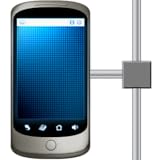
So, the Amazon “Kindle Fire” tablet is now reality and I believe it will be a big seller. At $199 it is within shouting distance of that “no brainer” gadget purchase price. Best of all, for us consumers, Amazon is forcing the rest of the tablet market to prove their value and “reason for being”.
That doesn’t mean that Motorola, Asus, Acer, Toshiba, Vizio, Samsung and whoever else is making an Android tablet this week is going to be out of business. Oh, and unless
Apple
hires Leo Apotheker (former CEO of Hewlett-Packard), I very much doubt the iPad is going to be killed off anytime soon.
There is an “if” though, because I’m writing about a device I’ve only seen in demo videos. Problems have been known to become apparent when a million users fire up a new device or service. But, for the sake of this article I’m going to assume that the demos are real, the people that used the demo units are being honest and that Amazon is sticking with their practice of not releasing products until they are ready. Besides, if Amazon doesn’t deliver it will make for an even better article come mid-November.
First let’s talk about the timing of Amazon’s release. It’s about as good as it could get. The product is available for presale now, on the cusp of the fourth quarter, it will be released over a month before Christmas and most importantly, may be available several months before Apple is expected to announce its new iPad model(s).
In designing the Kindle Fire Amazon looked at their target market and only included hardware necessary to support that offering. The device features:
- 1 Ghz Dual Core Processor
- 7″ multi-touch display with IPS (in-plane switching) technology and anti-reflective treatment, 1024 x 600 pixel resolution at 169 ppi, 16 million colors
- Battery Life – 7.5 hours of video or 8 hours of book reading (WiFi Off)
- Weight 14.6 ounces (413 grams)
- Charges from wall adapter OR computer USB port
- Free cloud storage for all Amazon content.
- One-month Prime Subscription
- 8GB RAM
- Amazon Silk web browser (http://amazonsilk.wordpress.com/2011/09/28/introducing-amazon-silk/)
So, Amazon has developed a device that when coupled with their extensive online content library is clearly aimed at the consumer/home market both in price and capabilities. I doubt we’ll be reading stories about the Kindle Fire being used as a Point-of-Sale system or for navigating commercial aircraft.
However, the Kindle Fire has more than enough processing power to provide for smooth video playback, fast app launches and a responsive user interface. The display is bright, has a higher pixel density than the iPad 2, and (hallelujah!) an anti-reflective screen.
If the battery life lives up to the claims it’s more than acceptable for consumer use and being able to charge the device from either the wall or a standard USB port makes it less likely you’ll have to carry, or hunt for a high-amperage charger when needed. Basically, you’ll be able to charge it with the same charger or cable you’re using for a number of other devices in your home or car.
The Kindle Fire comes with 8GB of storage space and no slot for extra memory. I believe that is going to be sufficient when you consider Amazon is also including free storage on their cloud system. To give you an idea I looked at memory usage on my iPad where I have over 350 apps installed and they only take up about 3GB of space. For further comparison I checked my T-Mobile G2 phone and found that 150 apps there resided in less than 700MB of memory.
This should leave sufficient room for the device to hold several hours of video, books and a lot of music, and provided there’s a WiFi signal available content can be removed from the device and new downloaded from your online library. Once you have purchased content from Amazon it is always available. I suspect that Amazon will charge for non-Amazon content that is uploaded to their service much as they do with their existing MP3 library service (the first 5GB of non-Amazon content is free and 20GB of storage costs $20/year with higher limits available.).
What may also aid in the Kindle Fire being a game-changer is their new “Silk” browser. Amazon is attempting to split the workload of the browser between their “EC2” cloud service and the device. They’ll be caching pages in their cloud service as well as making intelligent guesses (based on data gathered from all of their users) at what links you’re likely to follow and pre-downloading them to the device. They’ll also be optimizing (shrinking) graphics and other content so that it is only the quality and size necessary to look good on the Kindle Fire’s display. Companies like AOL, Opera, Skyfire and a few others have tried similar, albeit less complex, schemes in the past. If Amazon can succeed in speeding up the browsing experience it would become another significant differentiator between them and the competition.
Amazon’s choices of what features they didn’t include in the Kindle Fire are almost as important as the features they did. Amazon’s new tablet reportedly does not include:
- GPS or Accelerometer (G-Sensor)
- Bluetooth Radio
- 3G/4G Radio
- No Microphone
- No Cameras
- No Memory Expansion Slot
- No HDMI/mini HDMI port
All of these missing features were shaved to reduce cost, size/weight and battery usage. The only item on the list that surprises me is the Bluetooth radio as it would allow people to connect their wireless headphones and external speakers. Perhaps one can be added via the device’s mini-USB port, but that smacks of the same connectivity unfriendliness as the iPad Camera Connection kit for the iPad. Dante’ should have included “dongle usage and storage” as one of the “Circles of Hell” .
Some will complain about the lack of a 3G/4G option, but I don’t believe Amazon wanted to include a feature that would require their customers to contract with a third-party company. The cost of providing an all-inclusive 3G package like they offer on the existing 3G Kindle readers would have been too pricey. Customers don’t like metered service, contracts and, in general, mobile carriers. Even the best of the carriers is ranked pretty low on the American Consumer Satisfaction Index.
I’m sure AT&T’s backpedaling on the iPad 3G’s $30/month unlimited package (it’s now $25/month for 2GB) shortly after the iPad 3G was launched also had struck a nerve. It wouldn’t take many movie downloads to more than equal the price of the device in data charges. That may lead to unhappy customers.
On a side note, I’d suggest that anyone absolutely needing 3G/4G service for their Kindle Fire consider purchasing one of the standalone mobile hotspots. For roughly the same cost you could have 4G service (if available) and use it with a variety of devices. There are also some phones offered by the carriers that allow tethering as part of their data plan (My T-Mobile G2 phone is one of them).
The rest of the items are superfluous to the Kindle Fire’s intended use. The Amazon’s development team was not intent on replacing your computer, car navigation system, smartphone or point and shoot camera. The Kindle Fire is a relatively inexpensive device that is meant to fulfill the desire to watch TV shows, movies, play games, read books, newspapers and magazines, listen to music, browse the web and check things like email and personal calendars. My guess is that list covers about 85% of the use most tablets see today and a far higher-percentage of the use predicted for the hundreds of millions of people that haven’t yet purchased a tablet.
Certainly there are going to be people that want a device that has one or more of the features that Amazon did not include. Amazon is gambling that a lot of consumers are going to decide against paying $200 more for some of the fuller featured Android tablets or $300 – $450 extra for a WiFi iPad/3G iPad with GPS capability.
Presently, there’s only one successful tablet maker, Apple and the iPad. I’m looking forward to seeing how Apple reacts to the Kindle Fire. Their response is going to tell us a lot about Apple’s market strategy moving forward. Do they want to be a sales leader in the tablet marketplace or are they content to be the manufacturer of a highly regarded, high-margin luxury model? Steve Jobs once stated that the Macintosh’s market share was greater than that of Porsche, BMW or Mercedes and being the BMW or Mercedes of the computer market wasn’t a bad thing. We’ll soon get to see if that’s still the Apple strategy or if they’re willing to compete based on price in the tablet marketplace. With their locked-in content libraries (iTunes and the Apple App Store) proving to be a significant profit center for Apple the pressure to drop price or produce lower-end iPads might be very tempting.
While Apple is planning its next move the other Tablet makers need to decide in which segment of the market they want to compete. Google (and its licensees like Asus, Acer, Toshiba, Samsung and even Sony) trails both Amazon and Apple badly in availability of streaming video and other saleable content.
Even if Google can improve its content offerings it would be hard for their partner tablet manufacturers to reduce their margins of the units when they will be sharing their profits from the sale of content with Google or even Amazon’s own Android market offerings.
I expect we’ll see some of these guys pull the plug on their current offerings and others re-work their devices to go after the other potentially large tablet segment, productivity machines. Samsung, Asus, and Acer have always been adept at producing lower-cost versions of products. None has ever shown itself to be a market pioneer or provider of entertainment content. This may lead to some of them jumping ship from Android to Windows 8 and its desktop integration, but that’s over a year away and in a marketplace where the lifecycle of a device can be less than two months (HP TouchPad), a year is a long, long time.
Sony’s choices will also be interesting to watch. While their e-readers have been technically competent they haven’t really challenged Amazon or Barnes & Noble in that marketplace. They have two tablets and, of course, their own library of video and music content. In the past they have licensed that to vendors like Apple and Amazon. I doubt they’re going to pull that content from Apple or Amazon, two significant revenue sources; however tablets like the Kindle Fire do pose a threat to their portable gaming devices, and even to their PlayStation 3 consoles.
My guess, Sony will also focus their tablet offerings to compete in the productivity segment and perhaps work a revenue sharing deal with Amazon for content distribution through their PlayStation devices.
For those old-timers out there like me, I expect that the Kindle Fire could have the same impact on the tablet market as the Commodore 64 had on the personal computer industry back in 1982. Commodore’s CEO Jack Tramiel used to proudly claim that he made, “Computers for the masses, not the (upper) classes.
So, we may end up with the two of the highest rated companies for customer satisfaction in their respective markets going toe to toe (Apple is the highest rated Personal Computer Manufacturer and Amazon holds the top spot among online retailers according to the American Customer Satisfaction Index).
For those that enjoy watching the machinations, sparring and outright wars in the high technology industry this should be a great show.

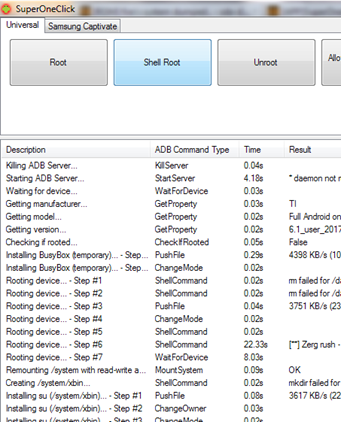
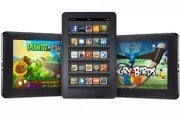
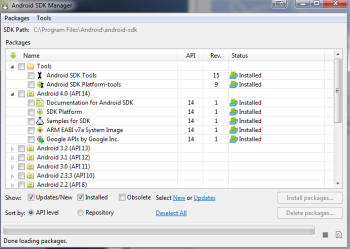
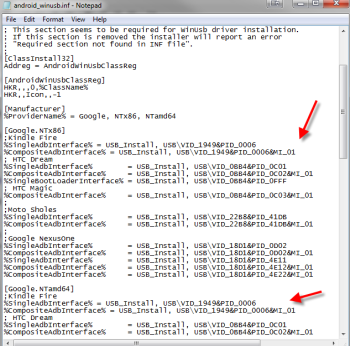

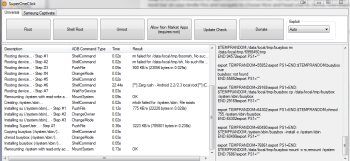
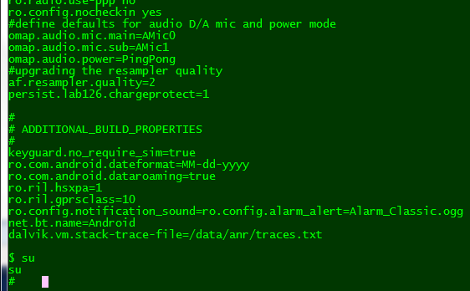
 So, the Amazon “Kindle Fire” tablet is now reality and I believe it will be a big seller. At $199 it is within shouting distance of that “no brainer” gadget purchase price. Best of all, for us consumers, Amazon is forcing the rest of the tablet market to prove their value and “reason for being”.
So, the Amazon “Kindle Fire” tablet is now reality and I believe it will be a big seller. At $199 it is within shouting distance of that “no brainer” gadget purchase price. Best of all, for us consumers, Amazon is forcing the rest of the tablet market to prove their value and “reason for being”.























